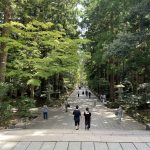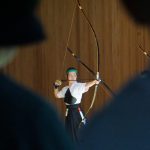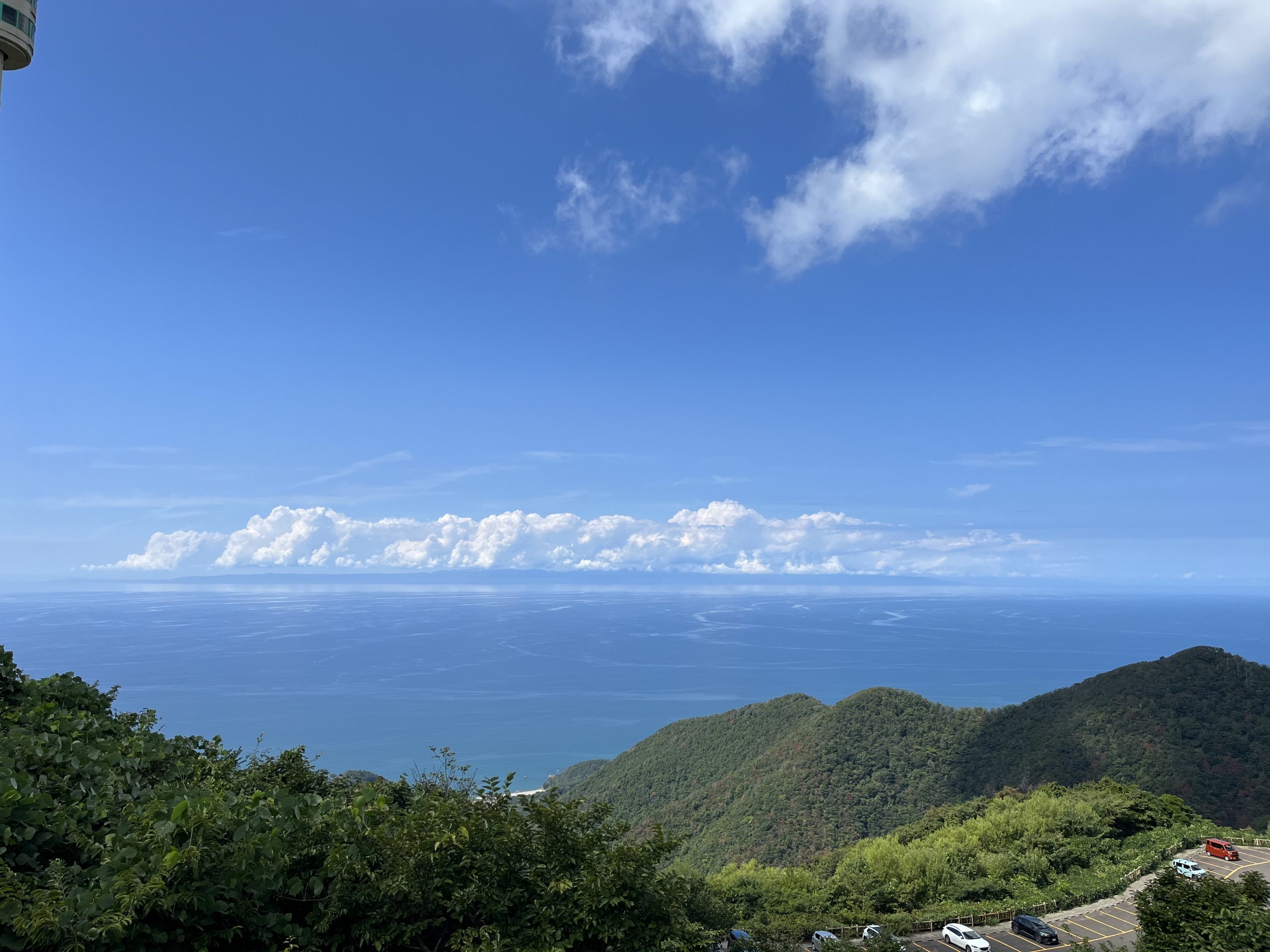和訳は英文の下にございます。The Japanese translation is below the English post.
A Trip to Yahiko Shrine
Table of contents 1. A trip to Yahiko Shrine from Tokyo 2. Accommodation 3. The approach to the shrine 4. The deity at Yahiko Shrine 5. Visiting the worship hall 6. The rear shrine 7. Some things in Yahiko Park
1. A trip to Yahiko Shrine from Tokyo
Yashiko Shrine is one of the Ichi-no-Miya (the highest class of shrines) of Niigata Prefecture. It is a famous power spot and people have worshipped there for more than 1300 years. If you ågo, they say, you will have good luck, a rich harvest, good relationships and new connections with people.
To get to Yahiko Shrine, take the Shinkansen (the bullet train) to Tsubame-Sanjo Station from Tokyo Station. It does not even take two hours.
From Tsubame-Sanjo Station, take JR Yahiko Line to the last stop, Yahiko Station. It takes more or less 30 minutes, depending on the train schedule.
2. Accommodation
A day trip from Tokyo is doable, but we stayed at Comfort Hotel Tsubame-Sanjo within three minutes’ walk from the station. FYI, it was inexpensive, clean, and the fee included buffet-style breakfast. They also have a laundromat.
You can also find accommodation in Yahiko area.
3. The approach to the shrine
Referring to a big a map of the area standing in front of Yahiko station, walk toward the Main Gate (called “Ichi-no-Torii”). On the way, there is a tourist information office and you can pick up an English map there.
People say we should not to walk in the middle of the path approaching the shrine, to show respect to the god. On both sides of the approach are traditional Japanese restaurants, inns with hot springs and souvenir shops.
At one of the inns with natural hot spring bathrooms, you can take a shower and soak in a Japanese-style bath, without having to stay overnight. The cost is about 700 yen or about $5.
In addition to soft serve, some souvenir shops in front of the main gate serve old-fashioned snacks such as “oden” and “tokoroten”. “Oden” is savory, cooked fish cake on a skewer, and “tokoroten” is chilled clear noodles made with seaweed with no taste. We eat it with soy sauce, vinegar and a little mustard.
As a souvenir or for your own snacking, you can get sweet “yubeshi”, soft candy made from steamed rice flour that is hard to find in Tokyo.
[Attention!] Since Yahiko is a small city, many restaurants stop serving lunch and close at 2:00 P.M. and do not open again until dinner time. There are no fast food restaurants.
4. The deity at Yahiko Shrine
At the Main Gate, we bowed and stepped in, and washed our hands to be cleansed.
The main deity of Yahiko Shrine is Iyahiko-no-Ookami, and people call him respectfully as O-Yahiko-sama.
He once was a man remembered as Ama-no-Kagoyama-no-Mikoto (we will refer to him as Mikoto in short). He was excellent in valor, and in honor of him, the shrine hosts archery competitions and a New Year ceremony using archery every year.
On the day of our visit, they had a Prefecture-wide competition of Japanese traditional archery by high school students.
At the time of Mikoto, another warrior from Hyuga (today’s Miyazaki Prefecture), started an expedition with his clansmen. On the way north in Kyushu, and eastward after he entered Honshu, he kept defeating opposing local clans. When he reached Kumano (in today’s Wakayama Prefecture), his new foe was very powerful. He faced an uphill battle, and asked for help from Mikoto who was also in Kumano.
With Mikoto’s help, he defeated the enemy and conquered Kumano. He finally got settled in Kashihara (in today’s Nara Prefecture) and declared himself as “Great King”. This is the first Emperor of Japan called Jinmu, according to Japanese mythology.
Emperor Jinmu afterword sent Mikoto to Koshi-no-Kuni (today’s Niigata Prefecture) to pacify the area. Mikoto followed the instruction and taught the locals how to develop land for cultivation, fishery, brewing, salt manufacturing, how to grow rice and sericulture.
When Mikoto passed away, people built a shrine for him. This was the origin of Yahiko Shrine which the shrine claims as the 4th Century B.C. More credible documents, however, let us only infer it was in or before 7th or 8th Century.
5. Visiting the worship hall
When we stand in front of the worship hall, here is the common way the Japanese behave: Two bows, four claps, and one bow. After the clapping, they put the hands together and pray briefly.

At most other shrines in Japan, though, they practice: Two bows, two claps instead of four, and one bow. The Meiji government instructed people to do it this way at all Shinto shrines. Before then, each shrine had their own style of worship.
Some shrines, however, discreetly returned to their own tradition, such as from two to four claps. Yahiko Shrine was one of them.
Four is an unlucky number in Japan since the pronunciation, “shi”, also means “death”. Nonetheless, they returned to four claps; some think there was a good reason for it.
In olden days, people believed that a person who lost in a power struggle and subsequently died can bring about natural disasters such as a large-scale earthquake, fire, pandemic, etc., with his/her fierce anger. Therefore, those who reached or remained in power sometimes felt guilty or uncomfortable about their deed in the past. They built a shrine and tried to pacify the spirit of those whose death they caused. Four claps is instructed at shrines where some believed a particularly unfair situation left the deceased with a long-lasting grudge.
Today, however, everyone visits Yahiko Shrine to wish for good luck, a good spouse, and a happy family. Whatever his case was, the power of the O-Yahiko-sama must be equally strong in the positive direction.
6. The rear shrine
Generally, a rear shrine is located on or near the peak of a mountain, and not all worshippers go as far. Some say the rear shrine is more sacred because it was the actual burial site. Inversely, a worship hall is built on the flatland or at a lower elevation within easy reach of people. At the worship hall, rituals are much more often held and more services are available; you find the office, a gift shop, a bathroom, and so on.
Our visit’s highlight was the hike to the rear shrine at the peak of Mt. Yahiko (634m), with the help of a ropeway. The ropeway station is near the worship hall.
The ride is only five minutes, but the view from the gondola is fabulous. We saw a glimpse of Echigo Plain, famous for high quality rice cultivation. Outside the station, there is a small restaurant, a tiny park for children, and to the west, a spectacular panorama of Sea of Japan with Sado Island floating like a long boat.
From that level, we climbed for about thirty minutes to get to the peak. This is where Mikoto and his wife, Umashihoya-Hime-no-Mikoto are enshrined. The views here are grander in all directions, but the rear shrine itself was humble in size and had no ornaments or protection from the elements.
7. Some things in Yahiko Park
On the left side of Yahiko Station spreads Yahiko Park. The park is not just flat but covers several forested hills and a small flatland, and Its fall foliage is very famous.
When we were there, we followed an uphill path leading to a small clearing with a tall stone monument. It was a memorial for people who were killed in oil drilling.
Niigata has produced crude oil and natural gas since ancient times. The oldest official document records that some “burning water” was offered from Koshi-no-Kuni (Niigata) to Emperor Tenji (reign 668-671). Today, the prefecture is still Japan’s largest oil producer. Modern oil drilling began in late Meiji era using Western techniques.
Three of presumably the largest companies at that time built this memorial in 1917. We imagine that there were so many victims in the dangerous work in the young industry that the management felt compelled to express their condolences in some way. On the monument, however, there is not a name, record or explanation of the circumstances.
If we had continued walking another 20 minutes, we would have reached another very old shrine, Yu Shrine. “Yu” means hot water, and the hot water it produced was its namesake. It also has a long history. The shrine says that the 12th emperor, Emperor Keiko, in the 4th Century A.D. built it.
Although we don’t doubt that those shrines are extremely old, we can’t take Japanese mythology at face value, particularly in terms of historical year and period. Some dozen oldest emperors may be too idolized. For example, the records tell of extraordinary longevity they lived and/or reigned, including Emperor Jinmu (the first) and Emperor Keiko (the twelfth) 127 years and 143 years, respectively.
[The end of English text]
弥彦神社への小旅行
目次 1. 東京から弥彦神社へ 2. 宿泊 3. 参道 4. 弥彦神社の祭神 5. 参拝 6. 奥宮 7. 弥彦公園にて
1. 東京から弥彦神社へ
弥彦神社は新潟の一宮です。縁結びの神様で、1300年以上の歴史があり、有名なパワースポットでもあります。
弥彦神社へは、まず東京から燕三条へ、新幹線なら2時間以内で行けます。燕三条駅からはJR弥彦線で終点弥彦駅まで、30分前後で行けます。
2. 宿泊
東京から日帰りもできますが、私たちは駅から徒歩3分のコンフォートホテル燕三条にとまりました。ご参考まで、安くて、きれいで、無料のバイキング式朝食が付いています。洗濯室もあります。
宿泊は、弥彦駅周辺でもできます。
3. 参道
駅前の大きな地図を見て、一の鳥居へ歩きます。途中に観光案内所があり、英語の地図もあります。
参道は、神様に遠慮して、端を歩くといいと言われます。参道の両側には、昔ながらの和食の店や温泉旅館、みやげ物屋などが並んでいます。
温泉旅館の一つで、シャワーを浴びて日本式のお風呂につかることもできます。泊まる必要はありません。料金は700円(5ドルぐらい)です。
ソフトクリームなどのほか、一の鳥居の前のみやげ物屋では、おでんやところてんなどの伝統的なおやつが食べられます。おでんは甘くない、串刺しの魚肉団子。ところてんは味のない海藻でできた冷たい透明な麺です。酢醤油とからしでいただきます。
おみやげに、または自分たちで食べるのに、東京では見かけない甘い柚餅子もあります。これは蒸した米粉でできた柔らかい餅菓子です。
[注意] 弥彦は小さな村で、ここの飲食店はだいたい午後2時でランチタイムが終わります。次に開くのは夕食時です。なお、ファストフードの店はありません。
4. 弥彦神社の祭神
一の鳥居へ来たら、お辞儀をして歩み入り、手を洗って身を清めます。
弥彦神社の主神は伊夜比古大神(いやひこのおおかみ)とおっしゃいますが、人々は敬意と親しみを込めてお弥彦様と呼びます。
お弥彦様はもと、天香具山命(あまのかごやまのみこと)という武勇に優れた人でした。そのため、弥彦神社では弓道の試合や、新年の弓始神事などが行われます。
私たちが訪れた日も、県内の高校の弓道大会が開かれていました。
天香具山命の時代に、日向(今日の宮崎県)にいた別の武人が一族を率いて遠征を始めました。九州を北上し、そして本州に入ってからは東進しながら、さまざまな部族を討ち従えましたが、熊野(今日の和歌山)に来た時、手強い敵にぶつかりました。苦戦した武人は、同じく熊野にいた天香具山命に助けを求めました。
天香具山命の助けを得て、その武人は熊野を平定し、橿原(今の奈良県)まで行って落ち着くことにし、自分は「大王」であると宣言しました。これが、日本神話で神武天皇と呼ばれる初代の天皇です。
神武天皇は、のちに天香具山命を越国(こしのくに、今日の新潟県)に送りました。その地を平定した後、天香具山命はそこの人々に土地の開墾、漁業、酒造、製塩、稲作、養蚕などを教えたのです。
天香具山命が亡くなると、人々は神社を建てて祀りました。これが弥彦神社の起こりです。神社では紀元前4世紀のこととしていますが、もう少し信用性の高い記録によると、7世紀か8世紀以前のことでした。
5. 参拝
拝殿の前に立つ日本人は、一般的にこのような所作をします。二回頭を下げ、四回手をたたき、もう一度頭を下げます。手を叩いたあと、手を合わせて短くお祈りをします。
ほとんどの神社では、二礼・二拍手・一礼と、四回でなく二回だけ手をたたきます。明治政府が人々に、一律こうしましょうと指導したのです。それ以前は、各神社には独自の拝礼の仕方がありました。
ところが、神社によってはそっと古いやり方に戻していました。例えば、弥彦神社がしたように、二拍手から四拍手など。
4は日本では死と音が同じで、縁起の良い数字ではありません。あえて四拍手に戻ったのには、それなりの理由があるという人もいます。
昔は、権力闘争で敗れて亡くなった人は、その激しい怒りによって大地震や火事、流行病などの自然災害を起こすことができると考えられました。そのため、権力の座に着いた、あるいはとどまった人々は、過去の行いについて後ろめたかったり居心地が悪かったりすると、神社を建て、死なせた人の霊を慰めようとしたのです。四拍手を定める神社は、亡くなった人が長く恨みを持つであろう不公平な状況があったのだということです。
しかし、今日では、誰でも弥彦神社を訪れて、幸運や良い伴侶、幸せな家族が作れますようにとお祈りします。お弥彦様がどのような状況にあられたにせよ、お弥彦様のパワーはポジティブな方向にも強く働くようです。
6. 奥宮
一般的に、奥宮は山頂またはその近くに置かれますが、参拝者が皆そこまで行くわけではありません。奥宮は、実際に祭神が埋葬された場所であり、より神聖だともいわれます。一方、拝殿は人が行きやすい平地近くにあります。拝殿では、儀式が頻繁に行われ、祈祷などのサービスがあり、社務所、お守り売り場、お手洗いなどがあります。
弥彦神社を訪れたうちで一番印象的だったのは、弥彦山頂(634メートルまたは2080フィート)で奥宮にお参りしたことです。拝殿の近くの駅から、ロープウエーでがありました。
ロープウエーに乗っているのは5分間ですが、高品質のジャポニカ米で有名な越後平野の一部が見られました。駅の外には、小さなレストラン、子供のための小さな遊園地があり、西の方には日本海が広がり、そこに佐渡島が細長い船のように浮かんでいました。
その地点から、30分ほど頂上へ歩きました。そこに、天香具山命と妻の熟穂屋姫命が祀られている御廟があるのです。四方の眺めは素晴らしいのですが、奥宮自体はつつましく、飾りも、自然の脅威から守るものも何もありません。
7. 弥彦公園にて
弥彦駅の西側に、弥彦公園が広がっています。公園は平らでなく、木の生い茂った丘々や平地からなり、秋の紅葉は特に有名です。
私たちが行ったときは、道なりに登ってみたら、森の中に小さな広場があって、殉教者慰霊碑と彫った石碑が建っていました。
新潟は原油や天然ガスで有名です。古くは燃える水を天智天皇(在位668年~671年)に献じたという記録がありますし、現在でも原油の生産量は全国一位です。明治後期に、西洋の技術を採り入れて近代的な石油掘削が始まりました。
大正6年にこの石碑を合名で建てたのは、当時おそらく最大の石油会社だったと思われる三社です。生まれたての石油産業は、危険な作業で多くの犠牲者を出したため、経営者は哀悼の意を表さざるを得ない状況だったのではないかと思います。しかし、石碑には人名も、事故の記録も状況説明も記されていません。
あと20分ほど歩けば、また別の古い神社、湯神社に行くことができました。ここから湯が出たというのが名の由来です。この神社も非常に古く、4世紀の第12代景行天皇が建立したといいます。
これらの神社が非常に古いことは疑いを容れませんが、日本神話の述べることをそのまま飲み込むわけにはいきません。特に、歴史年代や期間について。12人ほどの最古の天皇たちは神格化されていて、例えば、記録はこれらの天皇たちの異常な長寿・統治期間を伝えます。それによれば、初代神武天皇は127歳、12代景行天皇は143歳まで統治したことになるのです。
[和文部終わり]











